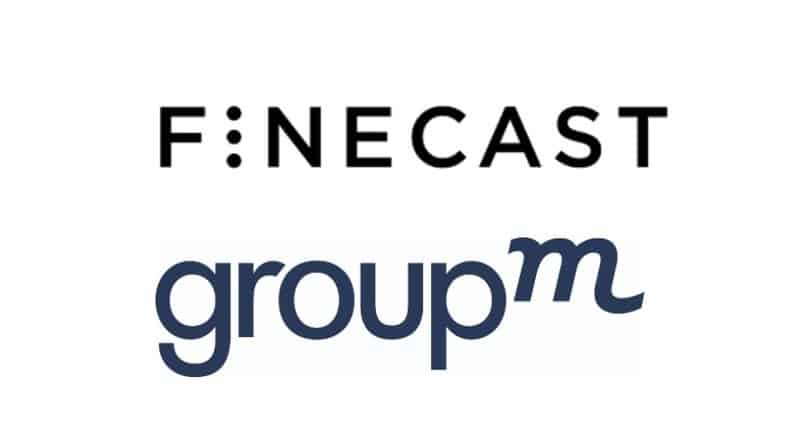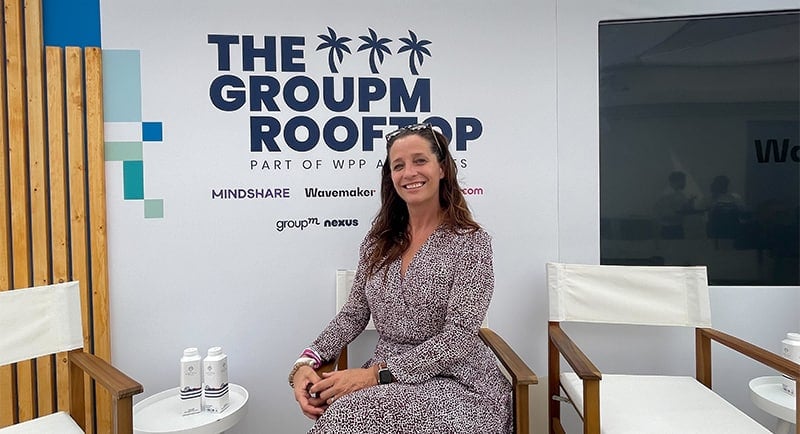The Cannes Lions International Festival of Creativity has wrapped up for 2023, with the event having brought together those that work in creative communications and advertising from every corner of the planet.
Mediaweek has been on location in the South of France, and spoke to some of the most influential people in both Australian and global media. Today is Nicola Lewis, CEO of Finecast.

Finecast in France
Bringing the Finecast team to Cannes has a lot of value for Lewis, who highlights the festival’s creative heart.
“Cannes has always been, and should always be about creativity. That’s what’s always attracted me personally to Cannes, this is probably my eighth time here. The Palais, the jury work, the submissions, and just the work that goes into this week, for me is the big draw card.”
There have been a number of trends that Lewis has picked up during her time on the ground at Cannes. They’re not something to ignore either, with Lewis saying that the festival “almost acts as a precursor to the next 12 months.”
“AI is a big one. For me, the interesting part of the conversation is the intersection of the machine and the human coming together. It’s not exclusively about the automation of everything.
“Commerce is another big one, that is a super, super exciting space. Then there’s addressable TV – and I get to have a lens of addressable TV on pretty much everything.”
Working with Finecast
For those who may not be as familiar with the work that the Finecast team does, Lewis says that the elevator pitch is that “we’re a single point to the addressable TV ecosystem.”
“We put everything together so that we can manage reach and frequency within the plethora of content options, broadcasters, streaming services, OTTs. We put it together into one place for a client, so they can activate their brand within the connected TV environment.
“At Finecast, we don’t talk about top or bottom of the funnel, addressable TV plays in the full funnel – and it’s very well documented. We talk about brand performance with our clients, and they’re asking us more and more about brand performance. It’s that connective tissue between awareness, funnel, through to action.”
As the technology behind addressable TV rockets forward, Lewis says that the Finecast team have another trick up their sleeve – a way to measure addressable TV results.
“Addressable TV is growing, but measurement is still the thing that we don’t have a silver bullet for. We tend to work with clients, depending upon the marketplace – and whether we’re looking at attribution, reach, frequency, mentality, inflation, footfall, web up lifts – and we build a measurement framework almost in a bespoke way for each of our clients. That enables them to measure their core media and business KPIs through addressable TV.”
See Also: GroupM brings total TV measurement to addressable TV with Finecast and Wavemaker
Another major focus for Finecast is Creative Message Optimisation, with the team digging into the nitty gritty of how TV ads are impacting audiences through bespoke research.
“Over the last four months, we’ve worked with System1 to create a bespoke piece of research called Ad Effectiveness, that’s really delved into how you build creative, and how you create a framework for post-campaign enhancements or post-creative enhancements,” says Lewis. “It’s not about just changing the frame of an ad, it’s about looking at things like a star rating, which is how positively a consumer is reacting to the ad.
“There’s spike rating as well, which is how quickly consumers respond to the ad, and looks at a short-term metric of visiting a website or taking an action based on the delivery. Then there’s fluency as well, which is almost the brand recall recognition.”
When it came to putting the Ad Effectiveness research together, the Finecast team went all out to create the most complete dataset possible.
“We specifically focused on some of our core markets, the UK, US, Canada, and Australia,” says Lewis. “We did 13,000 interviews across 46 existing Finecast brands from multiple categories. We analysed that creative to look at what their star rating is, so we could say ‘here, you need to dial up the character, the persona, people need to smile more, you need to change the audio within the ad’. But also, you need to make sure that the messaging from a short-term price point perspective is there. It’s been really interesting, and we’ve now got this amazing set of benchmarks to work with clients.
“We looked at the 11 billion impressions that we serve through the full calendar year 2022, with Finecast globally, and under 1% had any form of creative message optimisation.”
There will be a lot more research in Finecast’s future, with Lewis pointing out that the whole industry is “based on empirical evidence.”
“If you think about things like triple jeopardy and attention metrics, that’s been possible because we have empirical evidence now, because we’re able to embed technology to watch people’s reactions. That’s real-time, that’s humanistic.
“Finecast is investing heavily in research for, and on behalf of, our clients. It moves out of being theoretical to actually being able to implement this in real-time, building a network of the consolidated businesses around us that allow us to execute on that promise. It’s about simplifying the end result.”
The evolution of TV
As someone well and truly plugged into the TV landscape, Lewis says that shifting audiences is a top-line issue the industry will need to grapple with in the near future.
“The erosion of audiences, and aging audiences. TV consumption and content consumption has changed, and will continue to change – so that presents a challenge for the industry. Because as there’s more content, the expectation for consumers is that the content is quality in nature. If you’re a broadcaster, you’re not going to get a pass on not producing good content because the consumer’s expectations are up.
“You’re going to have the erosion of audiences, but it’s actually the shifting audiences I think that’s really key. As an industry, the challenge is to continue to draw consumers in, to continue to create really, really good content, and to balance personalization versus serendipity.”
It’s not all hurdles, however, with Lewis pointing out that the sheer size of the impact of TV also sets it up for more cheerful challenges.
“A positive challenge for the TV industry is the role that TV plays in omni channel. I see clients talking a lot about a budget fluidity approach to omni channel, and I think that that in itself from a planning perspective could make broadcasters feel nervous.
“TV’s always going to play a significant role in an omni channel plan, because it’s television – think of the impact that television has within the total media plan. So I think understanding the role of TV in an omni channel world is really important.”
–
Top Image: Nicola Lewis

